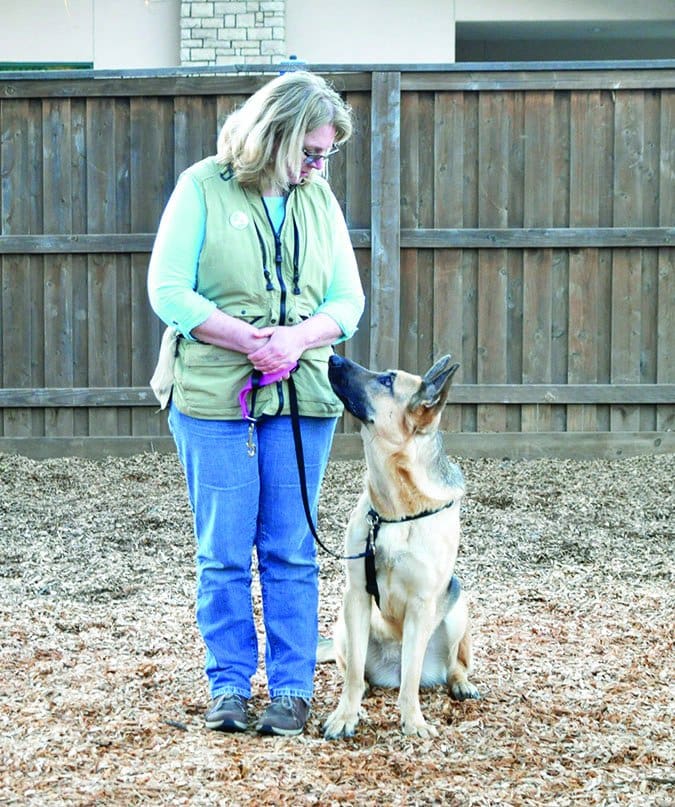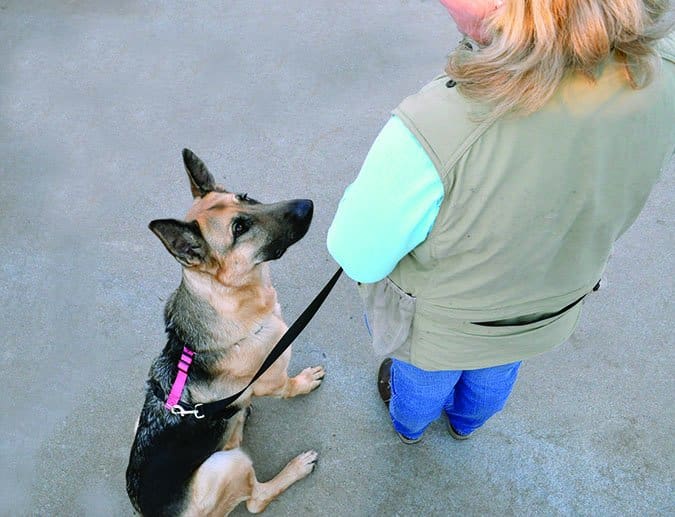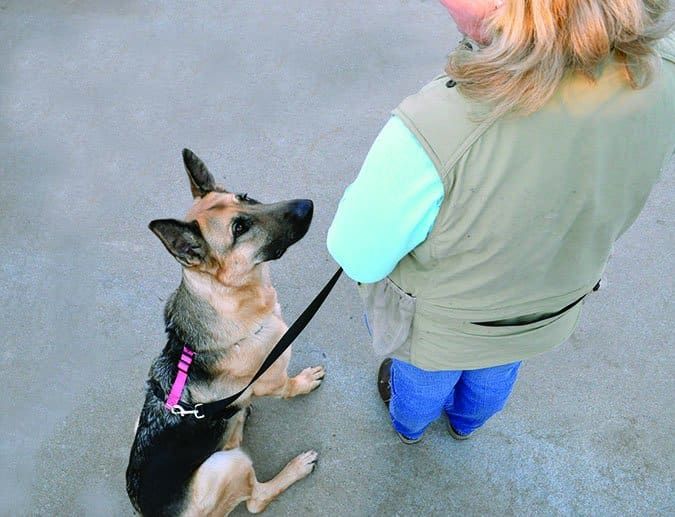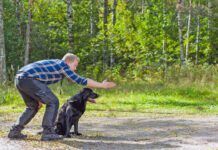Shaping – taking a desired behavior, breaking it into small steps, and reinforcing the steps until you build the final behavior – has become a standard dog training tool, especially in the force-free world. Those who are familiar with shaping regard it as invaluable for teaching and refining behaviors.
If you don’t yet have experience with shaping, try this exercise with your dog. It will help you realize how subtly and precisely you can influence the movement of virtually any part of your dog’s body.

5 Steps to Shaping Your Dog’s Behavior
1. Pick a body part and a desired movement: a head turn to the left or right, head raised or lowered, or a wave of a front paw. The latter is very easy, since dogs move their front paws a lot and seem to be highly aware of their movement. But you could also pick an ear, tail, hind foot, eye – really any body part.
2. Sit on a chair in front of your dog with a clicker and a generous supply of treats.
3. Wait and watch your dog carefully. The instant she moves the selected body part, even the tiniest bit, click and treat.
4. Be selective. If you chose a turn of the head to the right, click only those movements, even tiny ones, in that direction. If you opted for a lift of the right paw, don’t click any left paw movements.
5. In short order, you will see your dog get the idea, and start offering deliberate movement for you to click. You can build the movement into whatever behavior you would like – a spin, a nod of the head, a high-five, or shake of the paw – by continuing to click and treat your dog for increasingly “correct” approximations of the behavior.
Training Your Dog to Sit Perfectly
You can shape your dog to do pretty much anything she’s physically capable of doing. Trainers often use shaping to teach complex behaviors – tricks, service dog tasks, and more. But it can also be used for simpler, more basic behaviors. For example, a straight, fast sit in perfect heel position is very desirable for obedience and rally competitions, and for some musical freestyle routines. You can achieve that perfect sit, too, through shaping. Here’s how:

Let’s assume you’ve already taught your dog to do an automatic sit at your left side when you halt, through luring (holding a treat over her head to encourage her to sit) or capturing (clicking and treating when she offers to sit of her own volition). But her sit is crooked and not as fast as you would like it to be. We’ll start with just one of those qualities; if you shape for both at once it will confuse your dog. Let’s start with straightness.
Do 10 practice sits. Take several steps forward and halt. When your dog sits, click and treat, and note her angle of crookedness. Let’s say her first sit angle is 45 degrees off perfect. (“Perfect” is parallel to you.) Repeat 10 times, clicking and treating each time, and noting how crooked she is. Now average the numbers. Let’s say her average is 30 degrees from perfect. Thirty degrees is now your baseline criterion for shaping a straighter sit. That means that now she must sit only 30 degrees crooked or straighter in order to get a click and treat.
Now count out several sets of 10 treats. Each time she meets the “30 degrees or straighter” criterion, click and treat. Each time she misses (her sit is more than 30 degrees crooked) set a treat aside. When she meets the straightness criterion 80 percent of the time or better (she gets to eat at least eight of the 10 treats) you can raise the bar; now she has to sit 25 degrees or straighter to get a click and treat. Continue gradually increasing the criteria (requiring straighter and straighter sits in order to earn the click and treat) with your sets of 10 treats, until she is sitting perfectly straight at least 80 percent of the time.
Then you can work on speed. You will need to lower your “straight” criteria while you work on “fast.” To determine your baseline speed, ask your dog for 10 sits, but this time, count the seconds between your halt and your dog’s completed sit (one thousand-one, one thousand-two, etc.) and then figure the average.
Let’s say the baseline speed of your dog’s sit is four seconds. Now do several sets of 10 sits, clicking and treating only for sits that are four seconds or faster. Set aside a treat for each sit that is slower than four seconds. When she is meeting her four-second criterion at least 80 percent of the time (eating eight out of 10 treats), raise the criterion to three seconds, and continue.
When your dog is consistently giving you nice, fast sits (say, one-second sits), you are ready to combine straight and fast. Relax both criteria slightly at first – perhaps you will click for sits that are two seconds and 10 degrees or better. When you are getting 80 percent performance for both speed and straightness, gradually raise criteria for both, until you reach your final desired criteria for both.
Most Dogs Like Shaping
This may sound tedious, but most dogs respond amazingly well to shaping. This system – measuring some degree of criteria and monitoring an 80 percent success rate – keeps communication to the dog crystal clear and helps her understand and “get” the task much more quickly than if her handler just guesstimates and randomly clicks some sits more than others. It also gives you a much better understanding of the process of setting and raising criteria for shaping, and significantly enhances your skills as a trainer.
Thanks to Sarah Richardson, owner/trainer at the Canine Connection, a full-service training/boarding/daycare facility in Chico, CA, for demonstrating with foster dog Annie.
Author Pat Miller, CBCC-KA, CPDT-KA, is WDJ’s Training Editor. She and her husband Paul live in Fairplay, Maryland, site of her Peaceable Paws training center. Miller is also the author of many books on positive training. Her newest is Beware of the Dog: Positive Solutions for Aggressive Behavior in Dogs.






